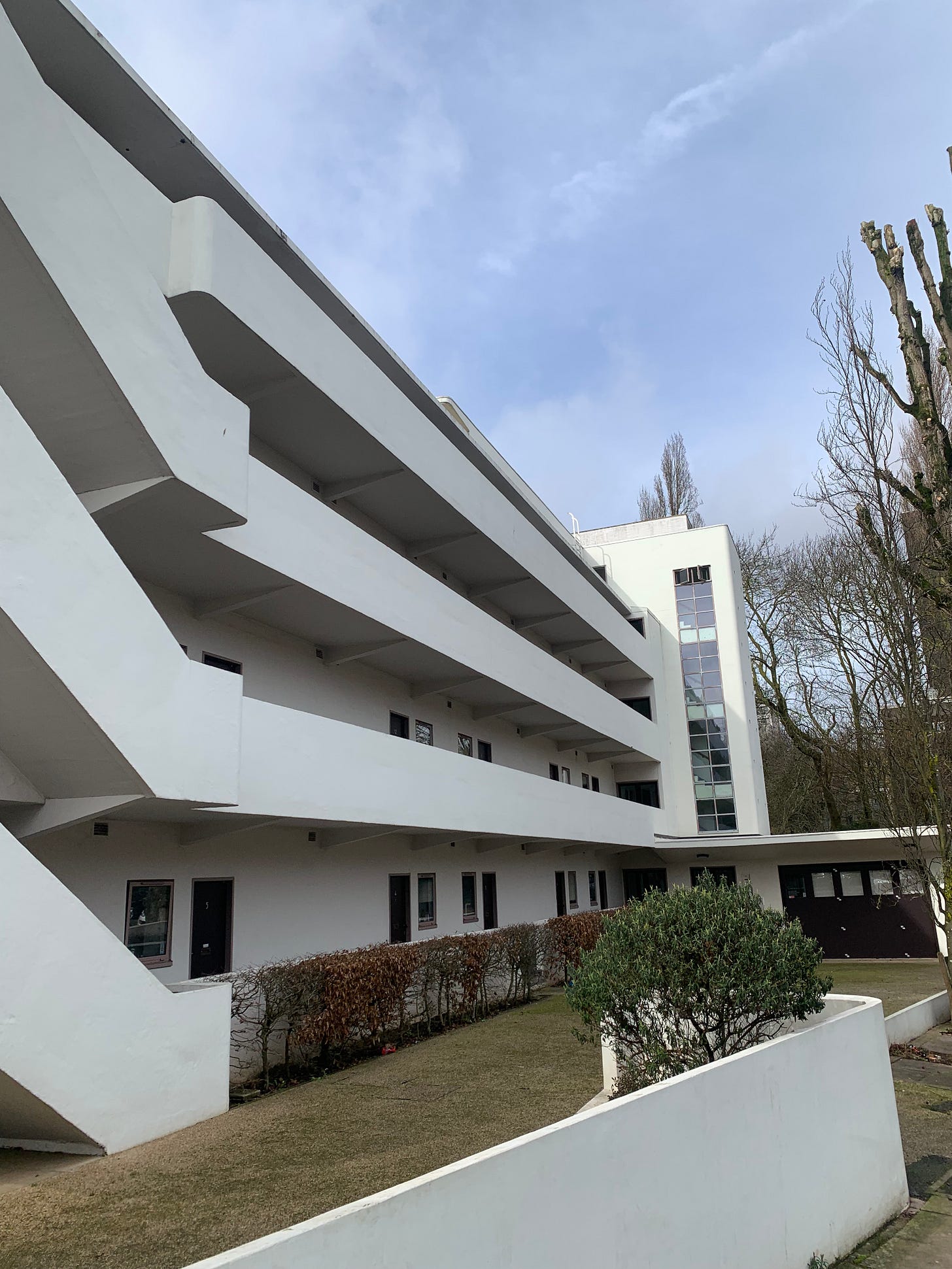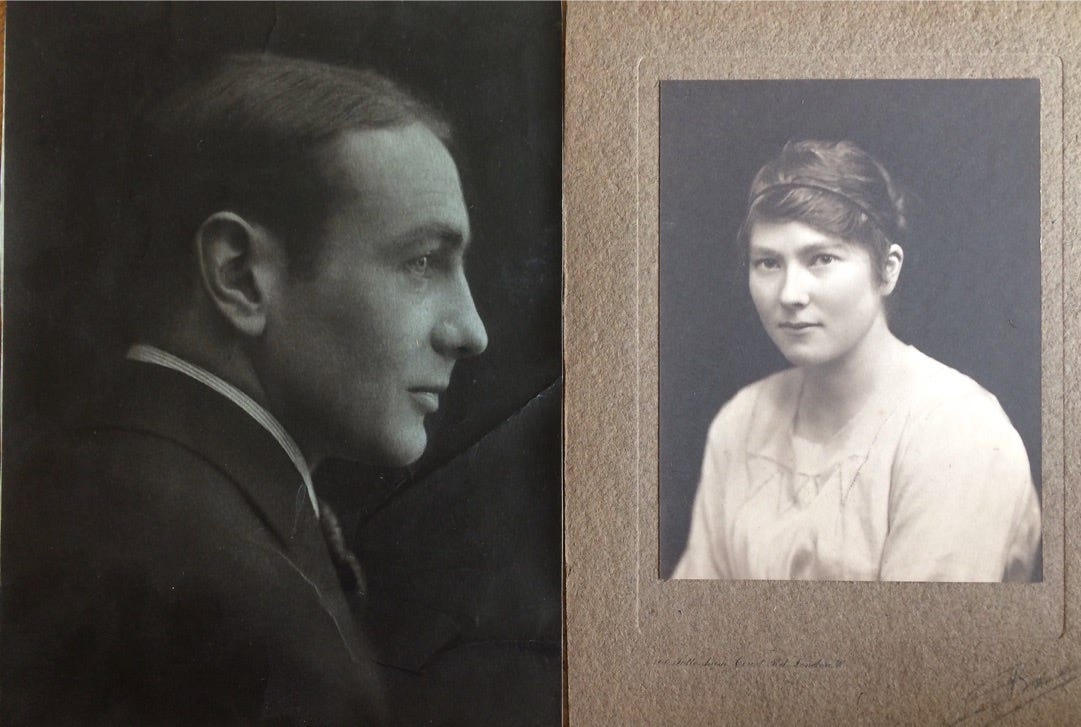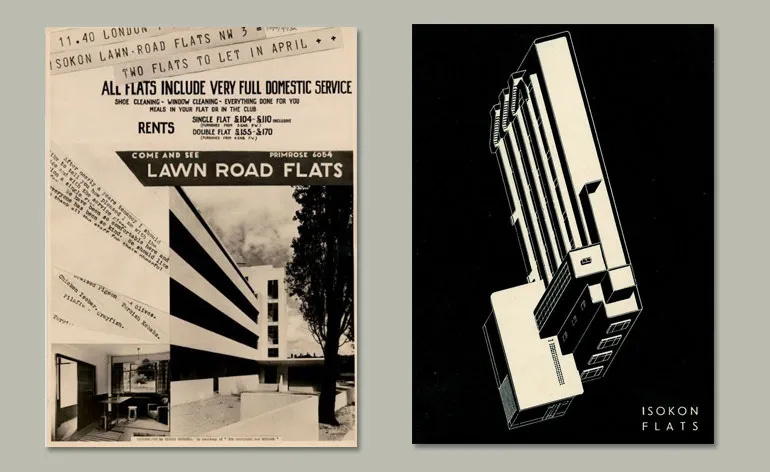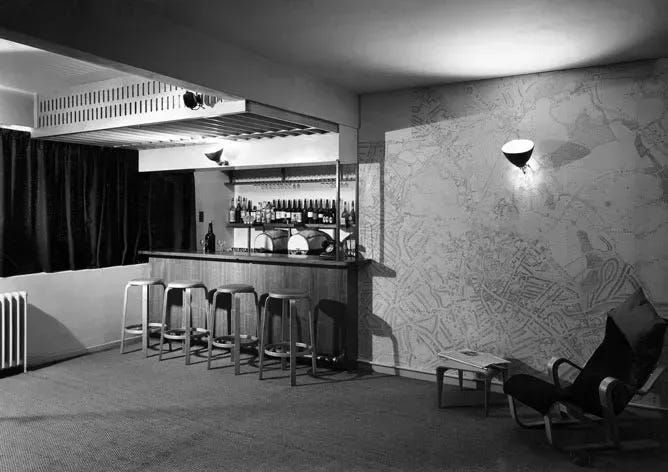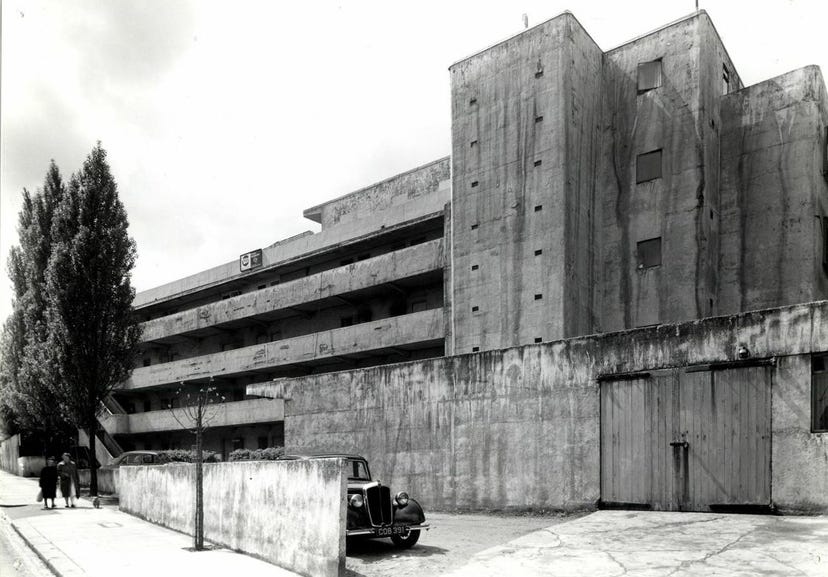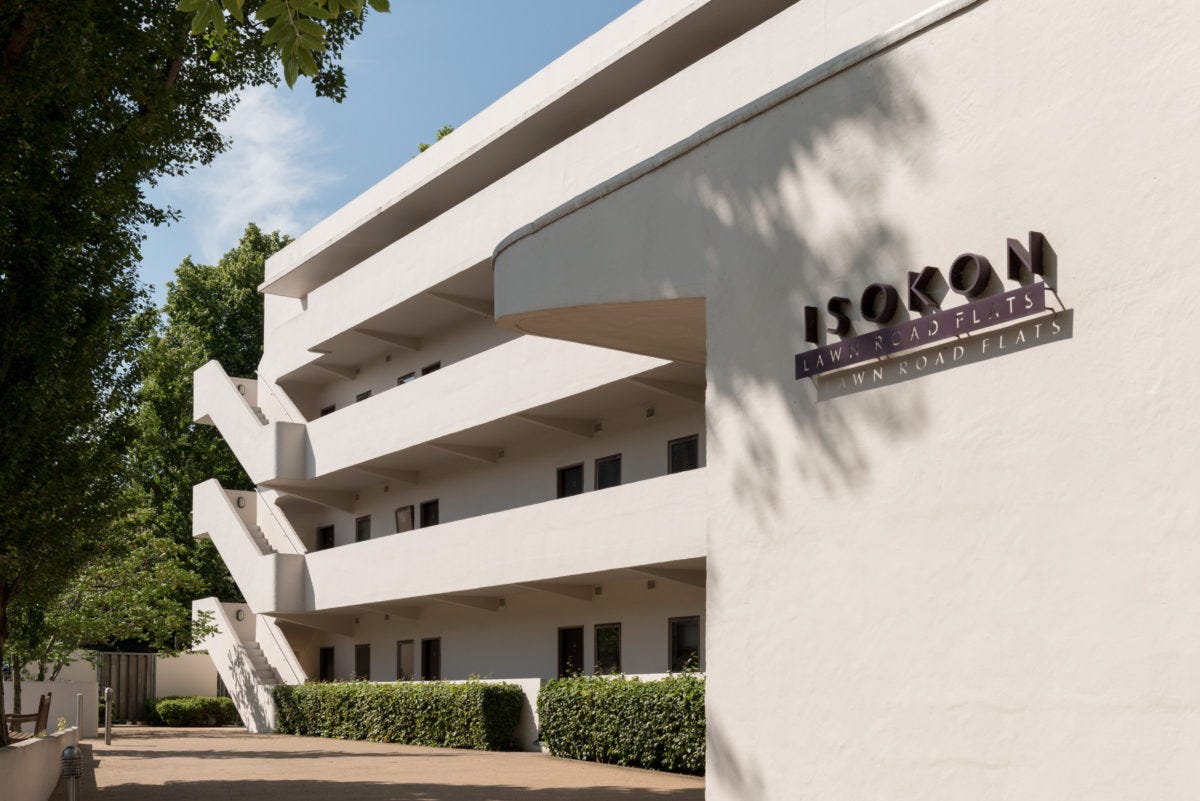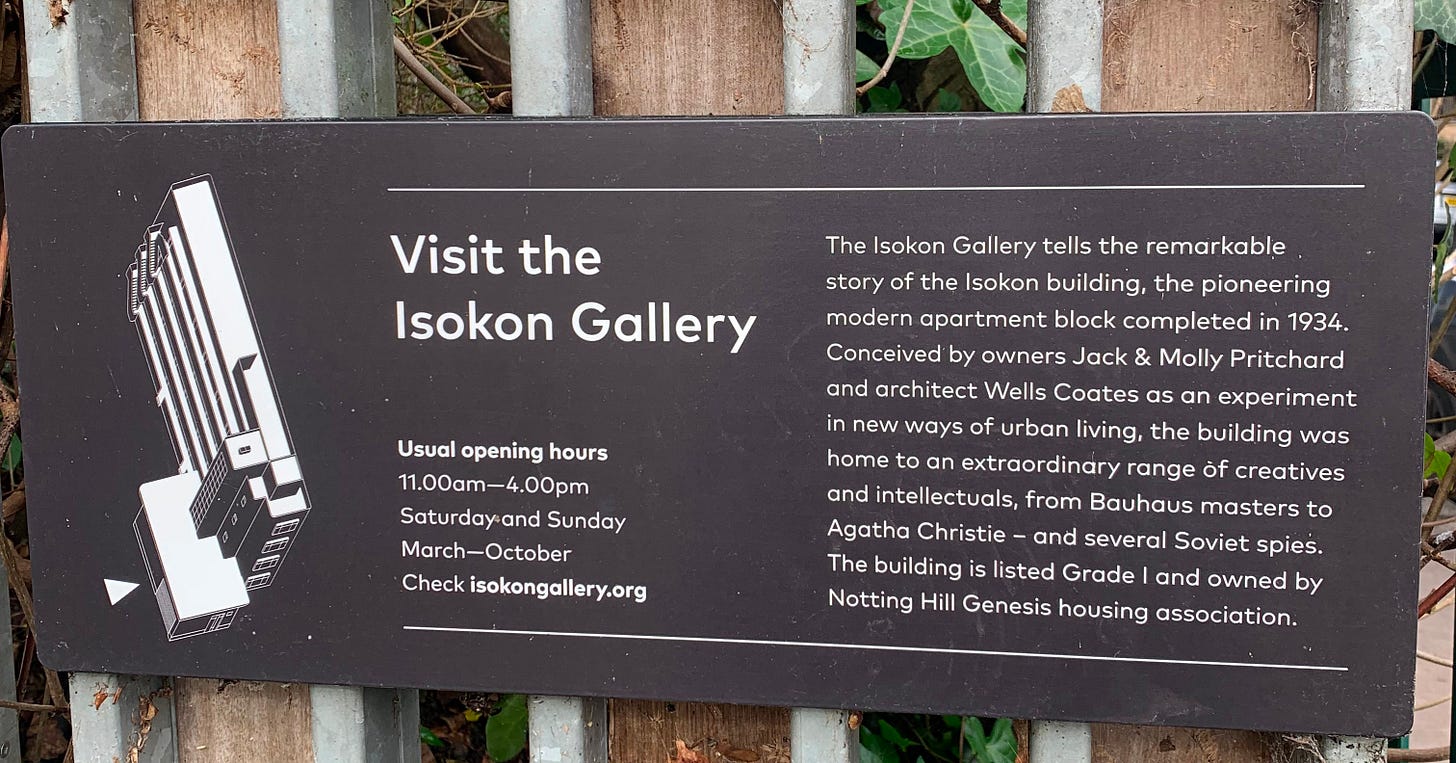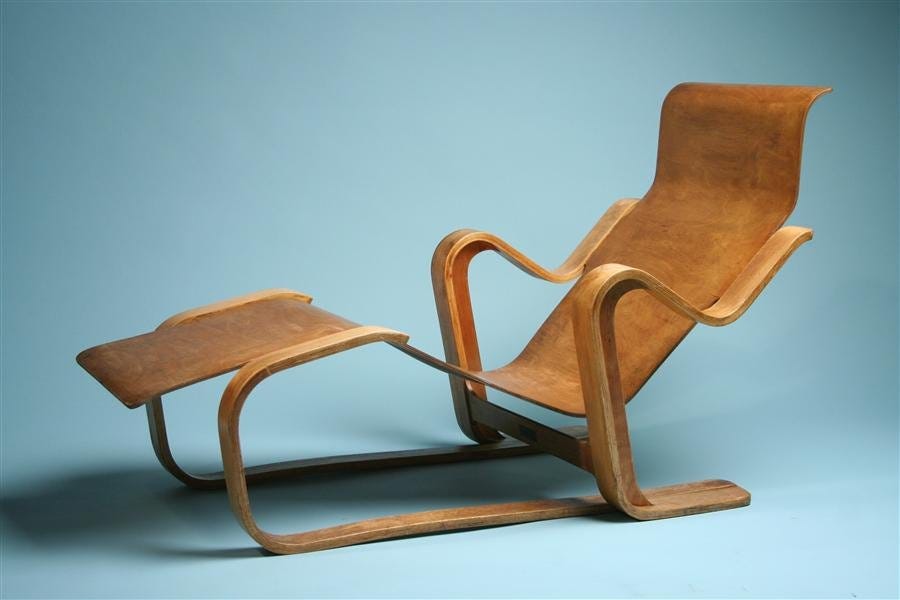Yes, we have a new format. Yes, I will still be discussing nearly identical things.
꩜꩜꩜ This email is likely too long to read in your inbox - open the post in a web browser to read the entire thing!
On the ground newsletters will capture reflections on a particular place, space, or exhibit that I have spent time at, in, or close to recently.
Living in London I have the oftentimes overwhelming opportunity to see a lot of art, a lot of architecture, and a lot of design. I usually have a laundry list a mile long of spaces I’d like to visit (9 Holland Street), homes I’d like to tour (The Cosmic House), and exhibitions I’d like to wander around (Emily Kam Kngwarray). Like Sisyphus, regardless of how much time I dedicate to exploring such beautiful, wonderful places, there is always, always something new waiting for me.
So, this new format is meant to be an opportunity for me to:
a) actually visit some of the places that have been languishing on said laundry list and b) add a layer of intention to my discoveries.
Some of my all-time favourite memories have been visits or holidays built around exploring a design interest, whether that be Finn Juhl’s modernist home outside of Copenhagen, an off-the-grid archeological extravaganza in Carthage, or a self-guided Art Nouveau walking tour in Brussels.
And now I can plan such expeditions with the knowledge that I have the chance to write up not only the details of such visits but also my personal reflections and, heaven forbid, opinions.
So, for our first edition, I want to discuss my recent visit to the Isokon Building here in Hampstead Heath, London. It’s a good one, I promise.
A bit of history
The Isokon Building, or Lawn Road Flats, was designed by the Canadian(!) architect Wells Coates for the psychiatrist Molly Pritchard and her husband the furniture entrepreneur Jack. The project was finished in 1934 and remains one of Britain’s earliest examples of Modernist architecture. The concrete building was a collaborative project designed on the principle of affordable, communal and well-designed inner-city living.
The final space, consisting of a 32 flats and a communal kitchen called the Isobar, was not Molly and Jack’s original plan. The couple and Coates had originally purchased the plot of land near Belsize Park with the intention of building a pair of interlocking houses, both as an architectural experiment as well as a way to accommodate the fact that Molly and Wells were also romantically involved. Jack – in true 1920s Bohemian fashion – encouraged the romance.
By 1931, however, the trio had not progressed in their duplex plans due to financial and planning constraints so instead pivoted to constructing “unit dwellings” which could be sold together with their furniture.
With this change, the company which Jack and Coats had originally founded to finance the construction changed its name to Isokon Ltd.
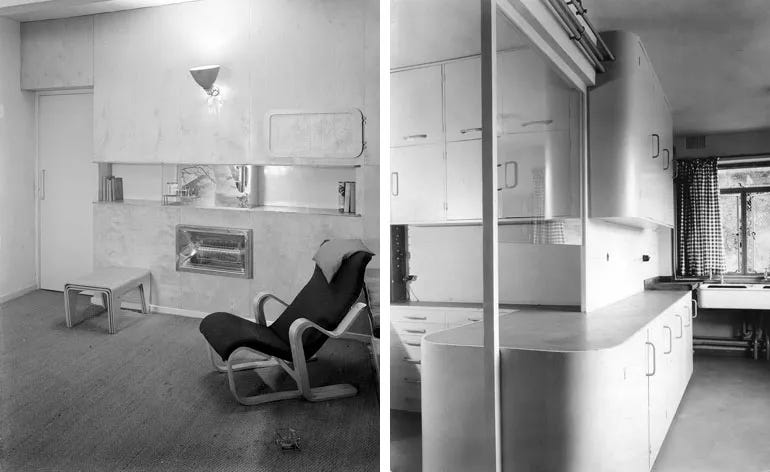
Why Isokon? After ISOCON or Isometric Unit Construction (units of same measure), a key feature in architectural drawings. Change the C to a K and you’ve got a cool-as-hell name for not only your company but also your modernist flats.
So the Isokon Flats were born. A note I particularly love is that Molly insisted that the design of the flats be aimed by young working women, as well as men. A detail bred of this consideration was the inclusion of a large communal kitchen on the ground floor where residents could cook collectively and send food up to their flats via dumbwaiters (they still had individual micro kitchens in each flat).
This was an innovative challenge to traditional divisions of domestic labour, where women were expected to cook in the home regardless of whether they had jobs of their own.
The communal kitchen was eventually transformed into the Isobar restaurant which became a watering hole and dining club to many of the world’s greatest artists, architects, writers, and Soviet spies over the course of the twentieth century.
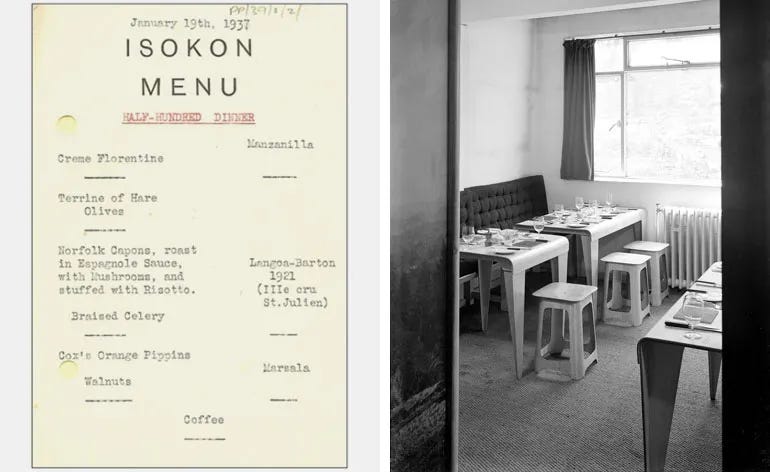
Here is a quick rundown of the who’s who of the Isokon Flats over the years:
Bauhaus masters Walter Gropius, Marcel Breuer, and László Moholy-Nagy all lived and worked in the building while collaborating with Jack Pritchard's Isokon Furniture Company which specialised in plywood and bent-wood furniture
Agatha Christie. Yes, the Agatha Christie.
Artists like Henry Moore, Ben Nicholson, and Barbara Hepworth all frequented the Isobar restaurant as part of the Half Hundred Dining Club
At least five Soviet spies resided in the building during the 1930s including Arnold Deutsch, the controller of the (in)famous Cambridge Five spy ring
The bar closed in 1969 and was converted into additional flats when the building was sold to the New Statesmen magazine. The building was sold again 1972 to Camden Borough Council, which abandoned the flats and left them in disrepair. It was the Notting Hill Housing Trust that finally bought and refurbished the site, achieving Grade I listed status for the building in 1999 and completed a full project of careful restoration in 2004. The building now houses 20 flats all occupied by private owners as well as a gallery space.
So what about my visit?
I have walked by the flats many, many times on my meanderings around the Hampstead Heath area of North London. However, I have never visited the gallery nor toured any of the interior of the building. A few weeks ago on a sunny Sunday I thought it was about time I changed that fact.
The gallery is only open for a few hours on weekends in from April(ish) to October(ish), so a visit requires a bit of planning. Stepping off the Northern line at Belsize Park, I meandered my way down to the building and noticed few individuals were milling about and chatting at the gallery entrance.
When I had finished some preliminary research (photo and video taking), I made my way over to the gallery and was introduced to one of the chatting gentlemen, a middle-aged man named Paul – who, I was told, owned one of the Lawn Road flats – and, if I donated a small amount to the gallery (entrance is typically free), he would give me a private tour of his flat.
Paul, do you even need to ask?!
An astonishing beginning to my visit as the interior flats of the building are not typically open to the public because they are private residences.
And so, with the promise of a private tour, I floated my way into the gallery to first enjoy the exhibition space.
The gallery is a small space which meticulously charts the intersecting history of Jack and Molly Pritchard, Wells Coates, the Isokon Flats, the Isokon furniture company, and the broader British Modernist movement.
I was astonished by their archival collection on display which included Isobar menus, architectural drawings, early Agatha Christie novels, furniture pieces, Modernist magazine features, and personal photographs (and much, much more). Not to mention the collection of furniture and home items built over the years by Coates, Pritchard, and Breuer for the Isokon Flats themselves or for sale via the Isokon Furniture Company.
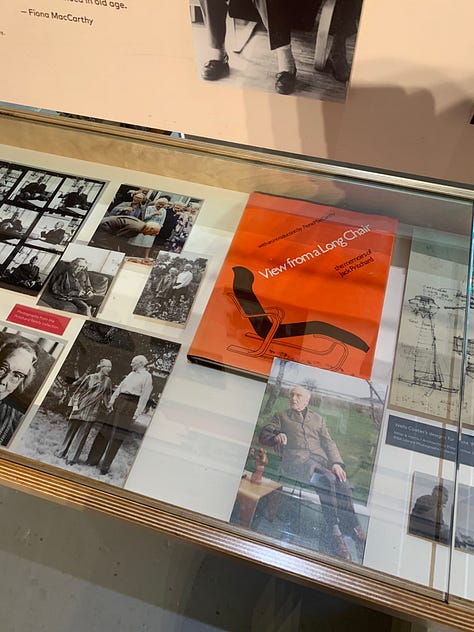
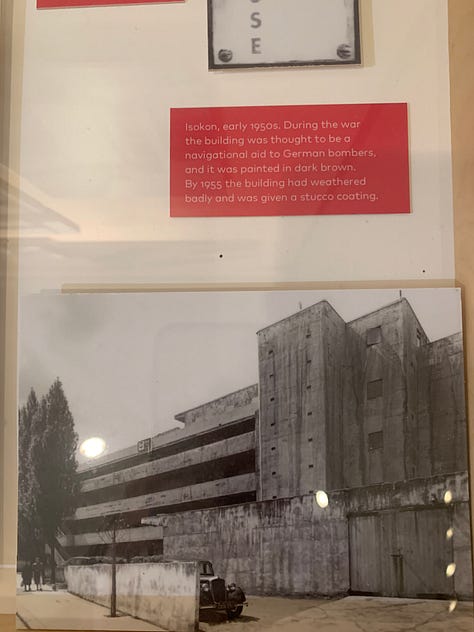
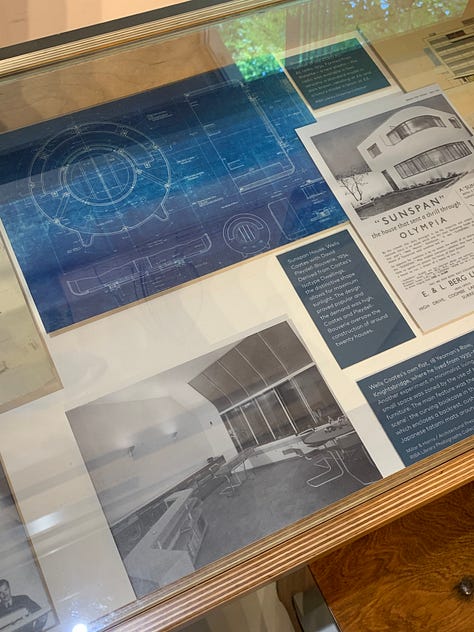
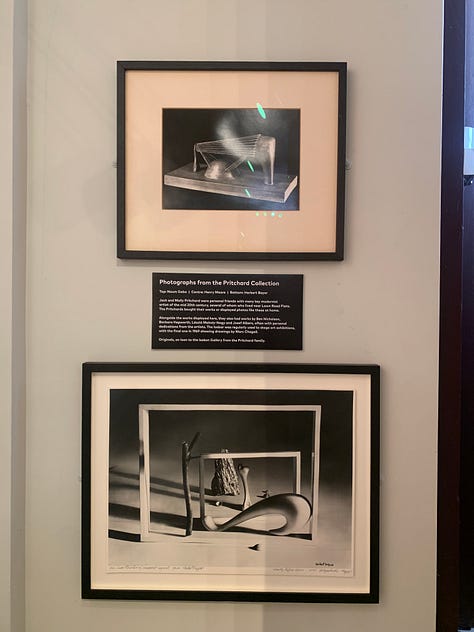



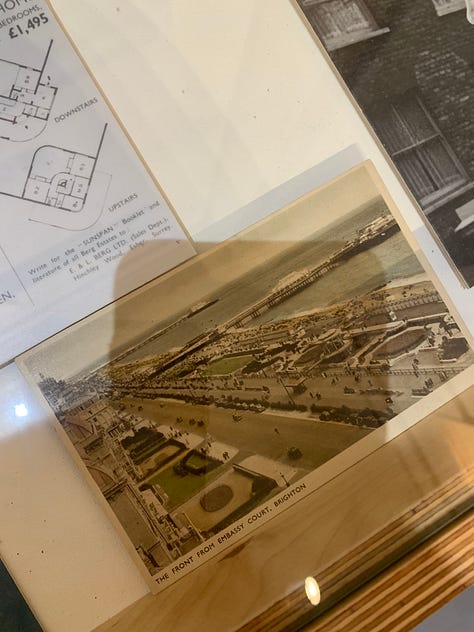

The Isokon Long Chair is a particular favourite…
These pieces of ephemera together really capture the ambition and innovation that took place at the Lawn Road Flats. Jack and Molly, with no prior experience of property development, decided that imagining a new way of living was how they wanted to spend their 20s. A truly astonishing achievement.
Here are a few more tidbits I loved from the gallery:
The Isobar was named both as a portmanteau of ‘Bar’ and ‘Isokon’ but was also a reference to Molly’s interest in weather. A barograph is a device that measures atmospheric pressure and an isobar is a line on a weather map connecting places of equal atmospheric pressure. Breuer, knowing of Molly’s climatic interest, installed a fully-functioning barograph in a glass case under a blown-up picture of some clouds.
Agatha Christie was the only resident ever allowed a dog. Perhaps a perk of being the best-selling novelist of all time.
The second chef to helm the Isobar was Philip Harben, who would go on to become one of Britain’s first television chefs. At Lawn Road, his adventurous cooking and charisma took centre stage. I love this quote from Harben, who claimed he “could scramble eggs and make mayonnaise long before [he] could read Thucydides or solve a quadratic equation.”
Egon Riss, a Jewish designer and architect, escaped Austrian Galicia (now Poland) amidst rising antisemitism and came to the Lawn Road Flats where he designed the Penguin Donkey – a bookshelf designed to be the perfect size for storing Penguin paperback books.
But let’s not forget about Paul!
After pressing my nose to the glass in the gallery for close to an hour, Paul suggested we go tour his flat. Or, as I quickly learned, his Modernist man cave.
Turns out Paul doesn’t actually live in his tiny 24sq m studio flat (which, by the way, would be too small to pass building code regulations today), but rather uses it as his personal office-cum-art gallery-cum-man cave. He lives down the road in a Hampstead townhome and walks up to his Isokon flat to work, hang out, or have a drink with friends.
He is also an avid collector of Modernist furniture and design and his flat if filled with everything from Aalto’s wave vases to Calder’s mobiles to Gropius’ Isokon tables to Riss’ Penguin Donkey.
Looking around his flat felt like playing Modernist I Spy - how many designs can you recognise?!
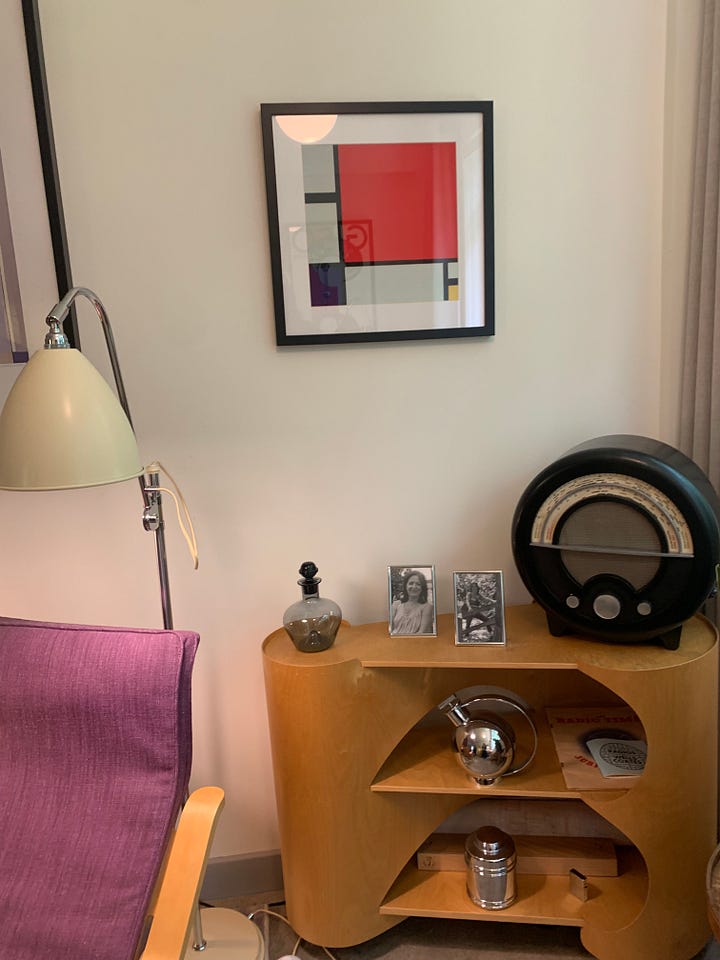

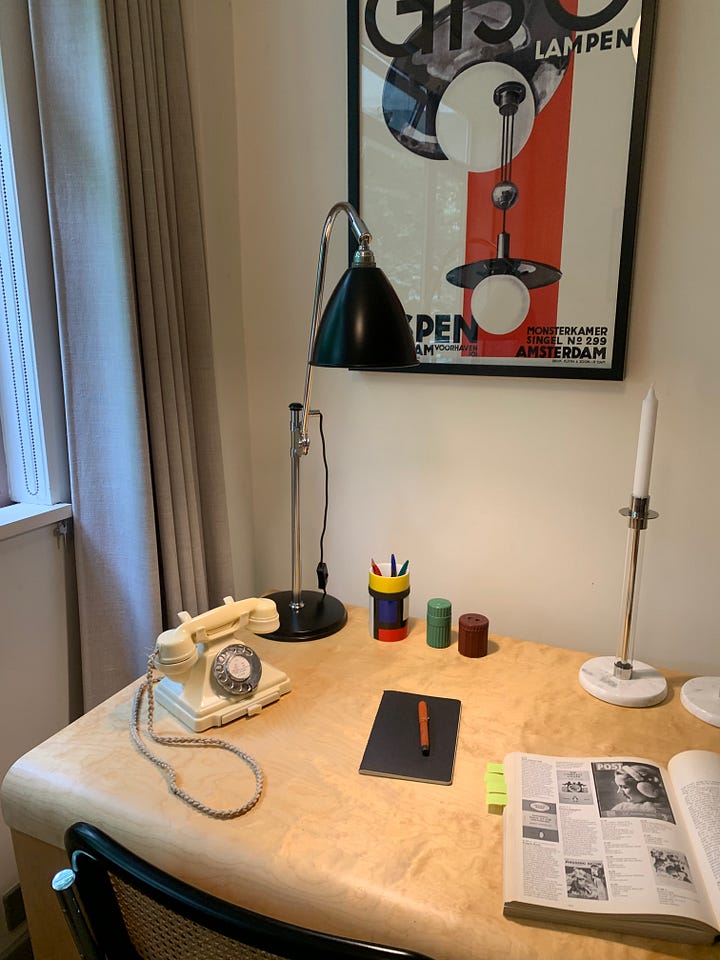
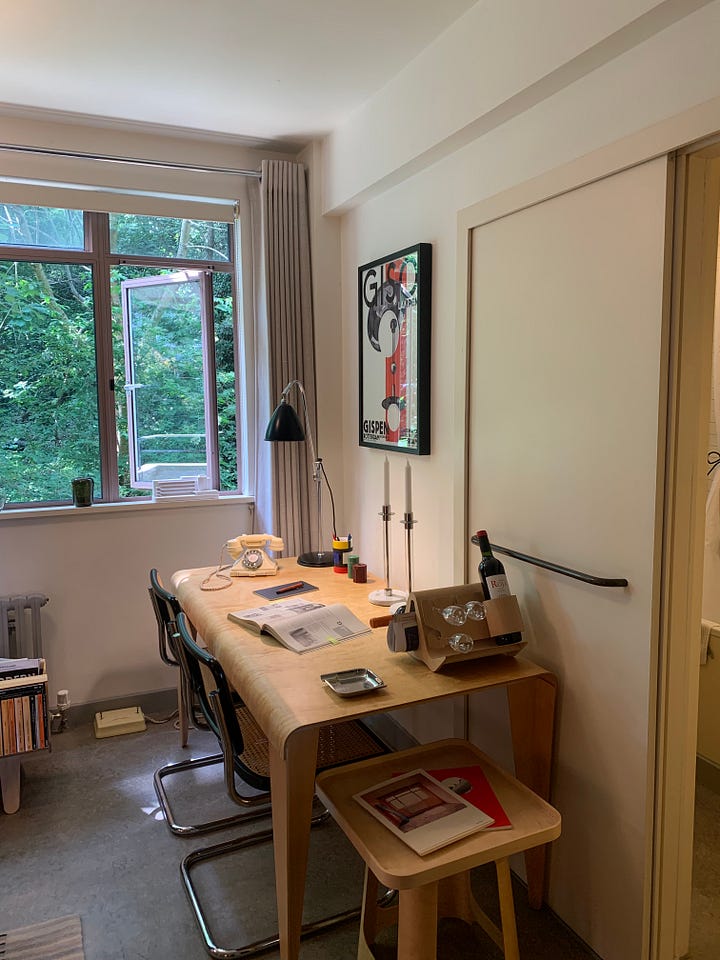


Paul and I ended up chatting about my work, his life in London, our favourite designers, his hobby of building famous Modernist homes out of Lego, where I got my ‘very cool style’ from (a compliment which made my week), and his personal interest in Gerald Summers’ work, a lesser known mid-century modern furniture designer.
I left the Isokon Flats feeling immensely grateful for the community that is can so easily be stumbled upon when one is unapologetic about their passions. In a city as big as London – or a place as vast as the internet – there is guaranteed to be others out there wanting to talk about whatever it is that lights you up.
Here’s to seeking more of that light❣️
That’s it for this week! ꩜꩜꩜Avery






